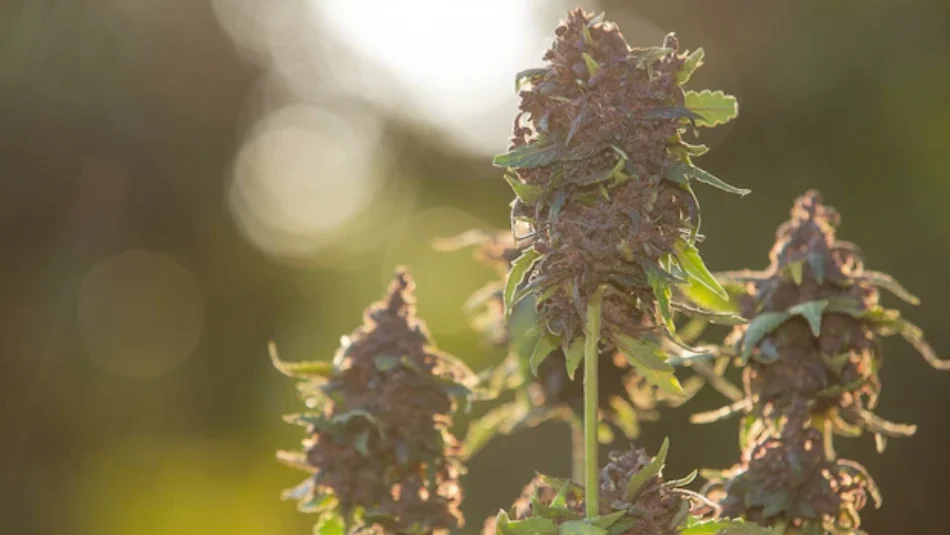The primary distinction between terpenes and flavonoids in cannabis is a sensory battle: terpenes give cannabis its distinct scents, while flavonoids also give different cultivars their distinct colors. Terpenes and flavonoids both contribute to the flavor and aroma of cannabis. Despite their similarities, they have different physiological interactions and provide distinct therapeutic benefits.
Studies have demonstrated that marijuana has a number of therapeutic effects that could aid in the treatment of various crippling illnesses. Obtaining a medical marijuana card is crucial if you want to use marijuana as a medication to treat a medical condition. This will allow you to legally consume marijuana and prevent you from facing legal issues.
Understanding Flavonoids: What Are They?
In nature, flavonoids are found in thousands of plants. The distinct flavors and plant pigmentation of each cannabis strain are attributed to these flavonoids. There are 20 flavonoids in cannabis, but there may be more that we haven’t yet identified. Cannabis is the only plant that contains Cannflavins A, B, and C. Many fruits and vegetables contain others, such as quercetin.
Flavonoids influence how we experience the effects of different cannabis cultivars. Flavonoids complement terpenes and cannabinoids to enhance the complexity of a cultivar’s sensory experience. We are more likely to use a cannabis variety again if we like the way it tastes and affects us overall. However, because flavonoids are one of the most poorly understood components of cannabis, we still have a lot to learn about them.
Advantages and Applications
Although the health benefits of each flavonoid in cannabis are believed to vary, the following are some of the most widely accepted therapeutic applications:
- Antioxidants (protection from cell damage)
- Improving cardiovascular function
- Anti-inflammatory
- Anti-viral/anti-bacterial
- Neuroprotective
- Prevention against diabetes, cancer, and other diseases
Terpenes: What Are They?
Terpenes, which are organic substances present in plants like flavonoids, give cannabis its distinct flavor and scent. In addition to cannabis, terpenes are found throughout nature and may offer additional health advantages.
The special qualities of terpenes, which are present in the trichomes of the plant, also influence a cannabis cultivar’s sensory experience. At least 100 distinct terpenes have been identified by scientists in cannabis, which explains the large range of cultivars available for purchase.
Benefits and Practical Uses
Numerous studies have found evidence that terpenes can be beneficial in treating a range of medical conditions. Although additional supportive research and clinical trials are necessary for each of these properties, some advantages could be as follows:
- Anticonvulsive
- Anti-inflammatory
- Anti-viral/anti-bacterial
- Mood-boosting
- Cancer/tumor-fighting
Terpenes may also help people who are stressed feel less anxious. For instance, it has been demonstrated that breathing in lavender oil, which is rich in linalool, has calming effects.
Terpenes are found in many everyday products, including:
- Insecticides and repellents for mosquitoes
- Lotions, shampoos, and additional skincare items
- Candy and other foods contain flavorings.
Terpenes vs. Flavonoids: Which Offers Greater Therapeutic Benefits?
Although science has not yet fully investigated their roles in cannabis, terpenes and flavonoids are both active compounds with a variety of potential therapeutic benefits. However, when the two compound groups cooperate in the body through the Entourage Effect, they offer cannabis users the greatest benefits.
Together, the distinct terpenes, flavonoids, and cannabinoids of each cultivar create distinct physiological experiences that influence the endocannabinoid system (ECS) to treat a range of illnesses. Results vary depending on the dosage and concentration of terpenes and flavonoids.
To accurately determine which dosages, ratios, or formulations will be beneficial for specific health issues, however, we require a great deal more research. A cannabinoid-terpene-flavonoid profile that works for one individual might not work for another because each person has a different ECS. A person’s age, level of activity, body-mass index (BMI), gender, and use of other prescription drugs can all affect how a certain type of cannabis affects them.
There are many more types of terpenes (100 versus 20 flavonoids), even though both terpenes and flavonoids have an impact on the body and account for around 2% of the dry weight of the cannabis plant. Additionally, high concentrations of flavonoids are more difficult to find in nature, making terpenes the more readily available compound of the two.
If you are considering adding marijuana to your treatment regimen to treat any of your incapacitating health issues, we always recommend that you first speak with medical marijuana doctors in Columbus, Ohio. The doctor will give you advice on how to use marijuana safely and effectively.

